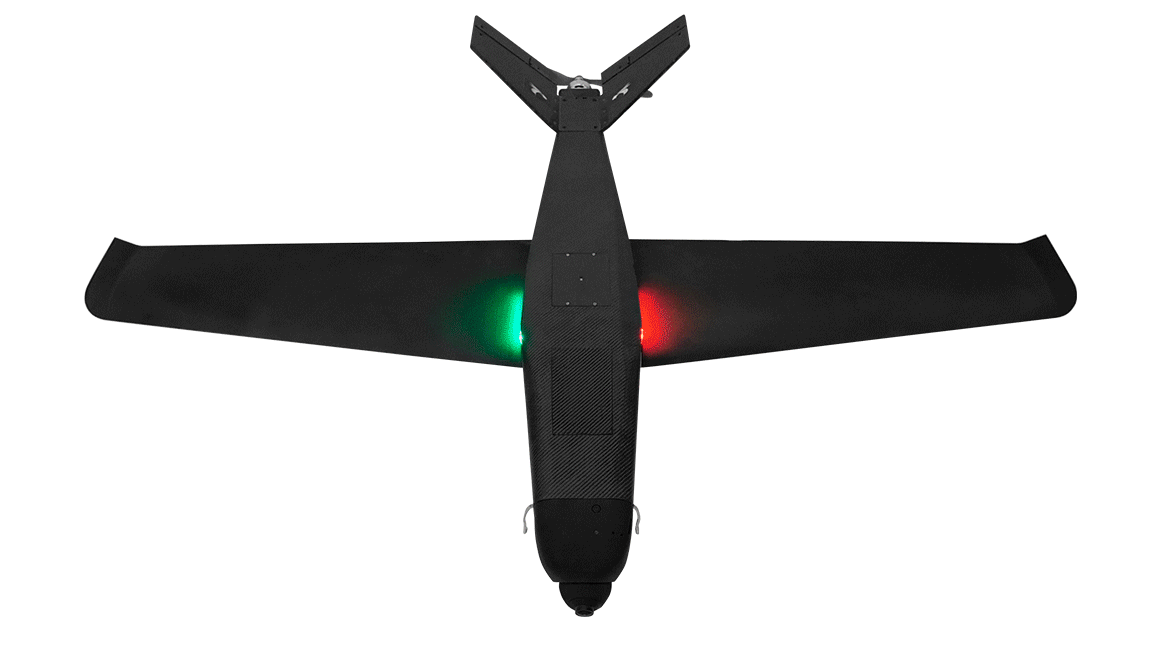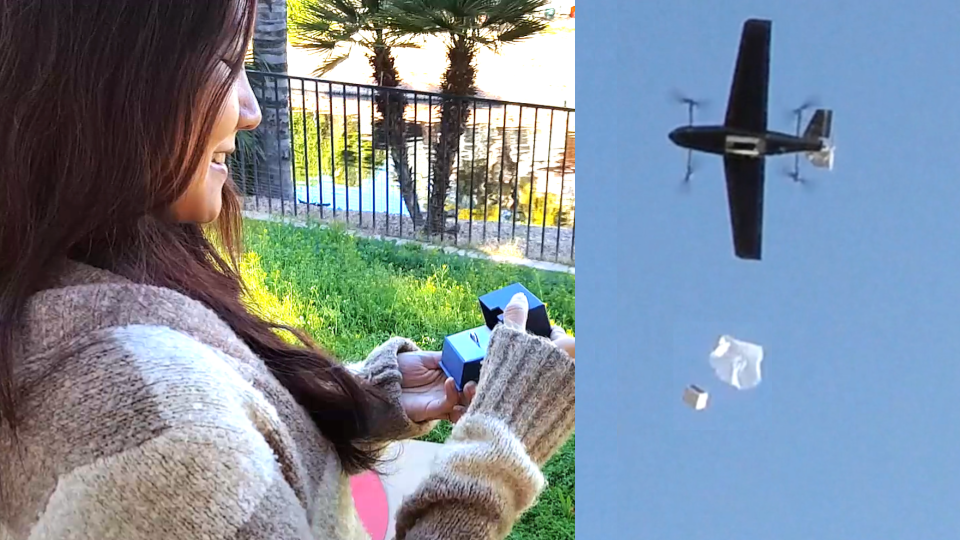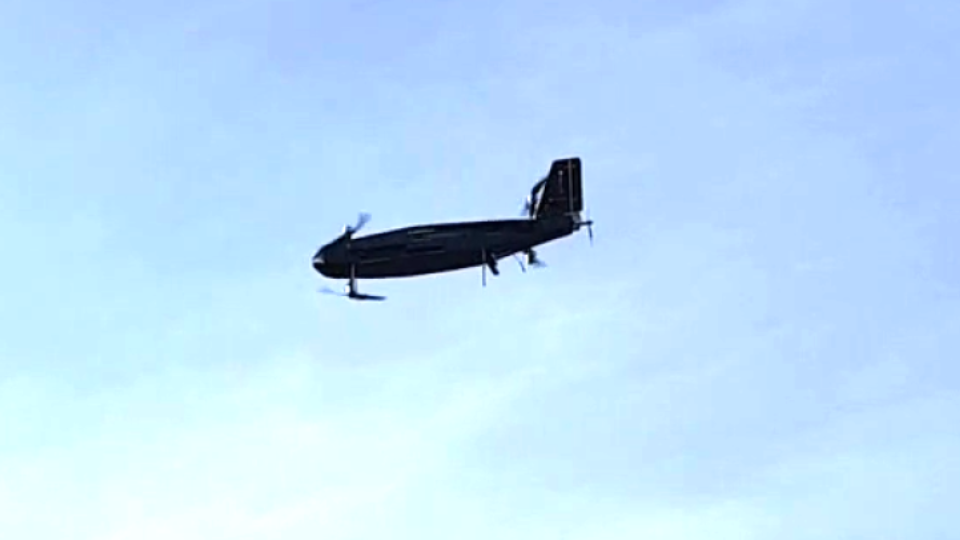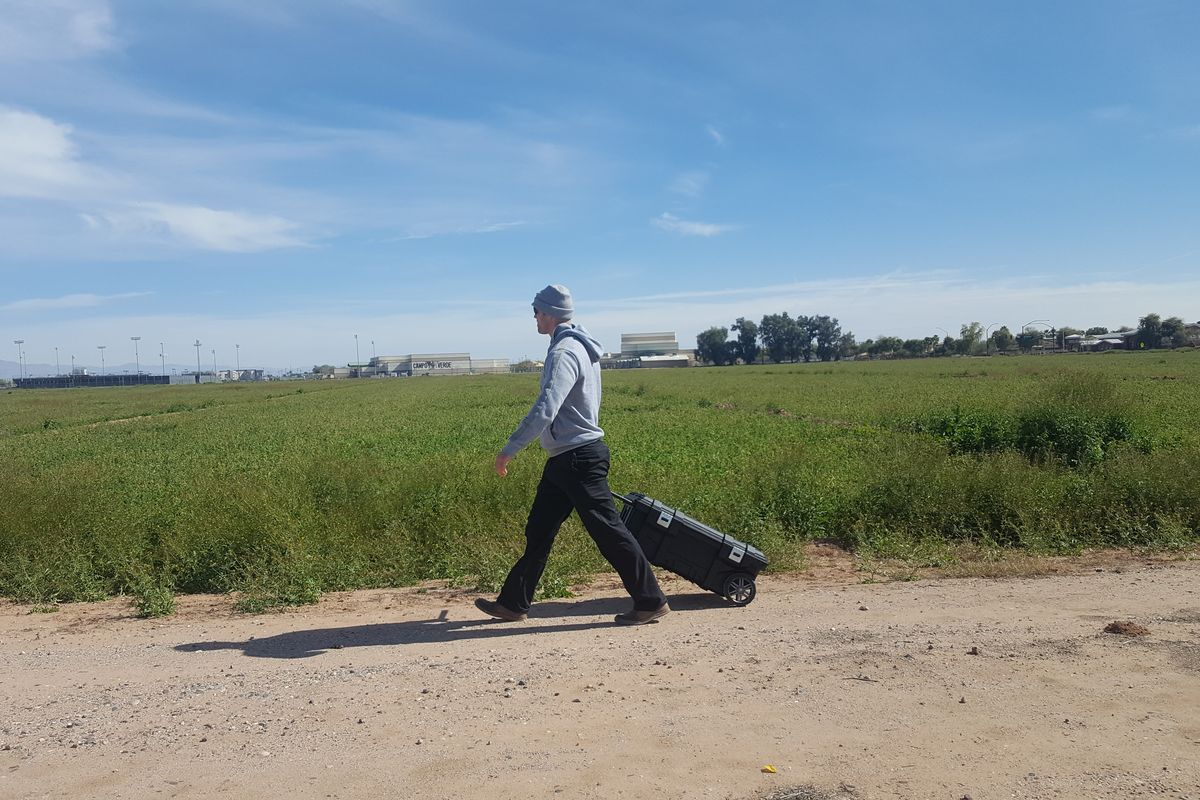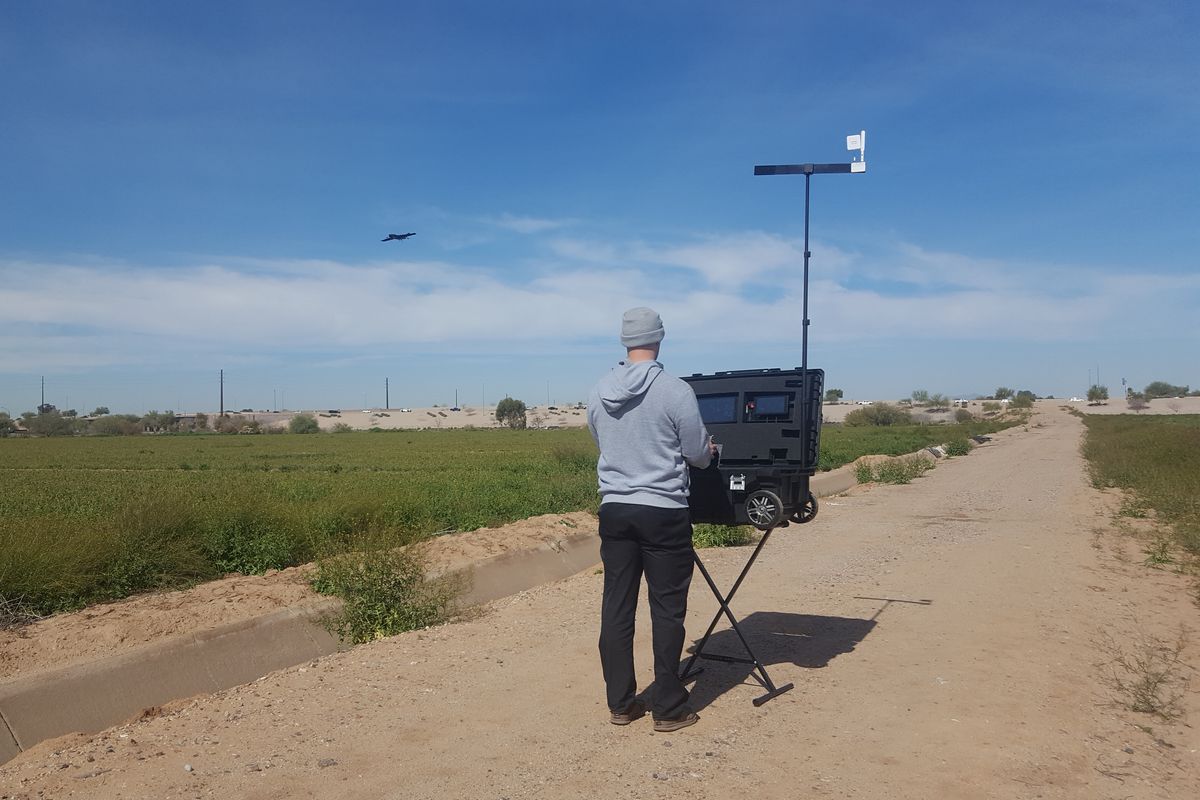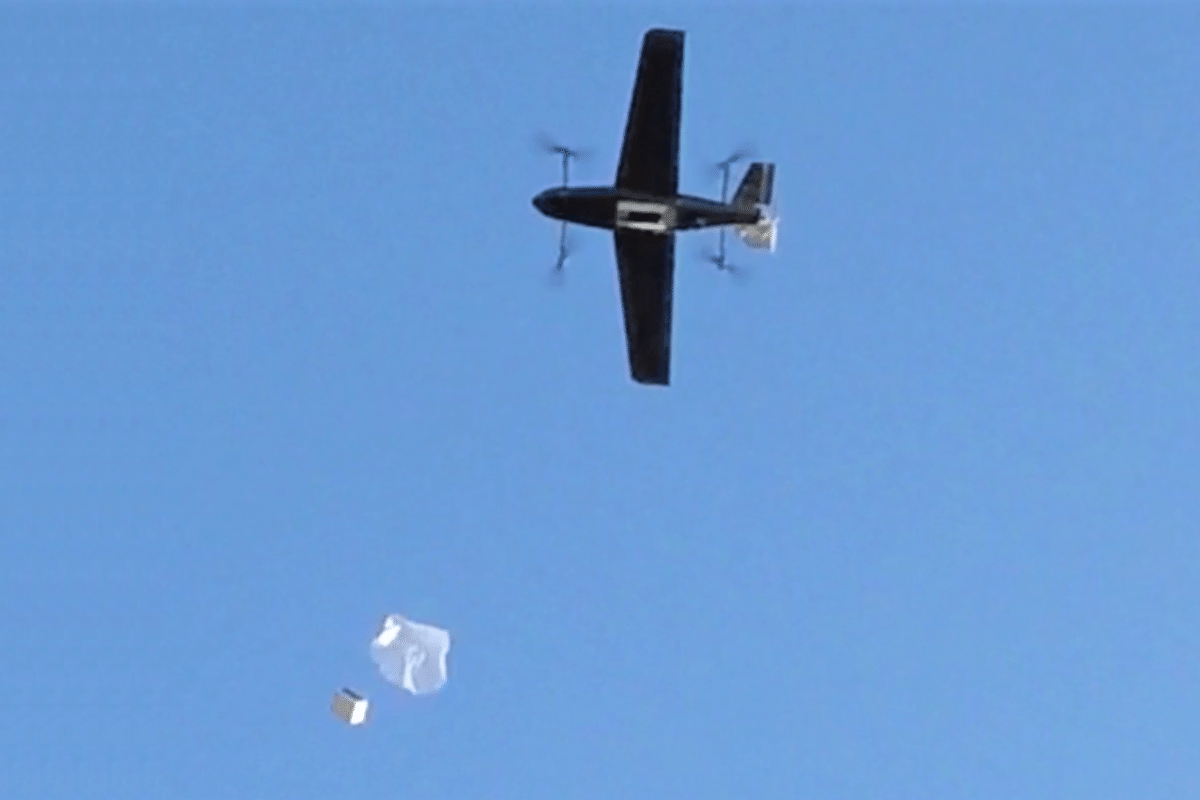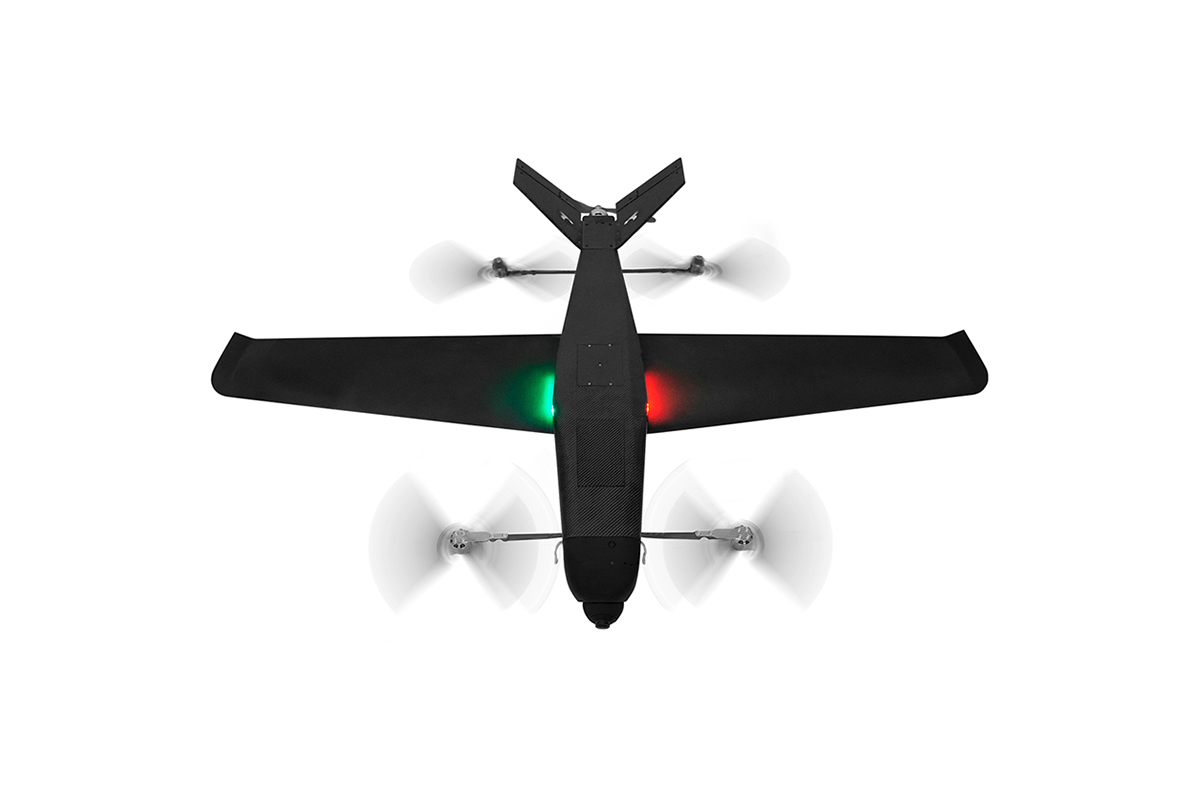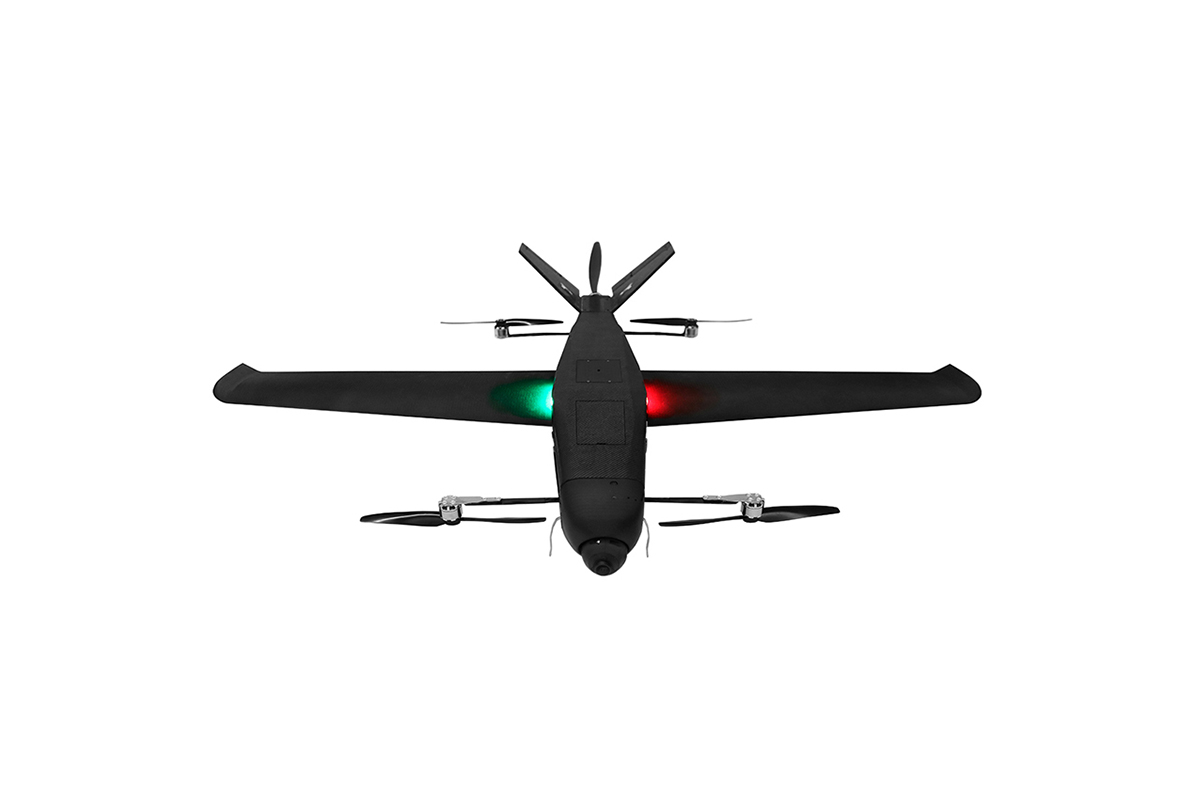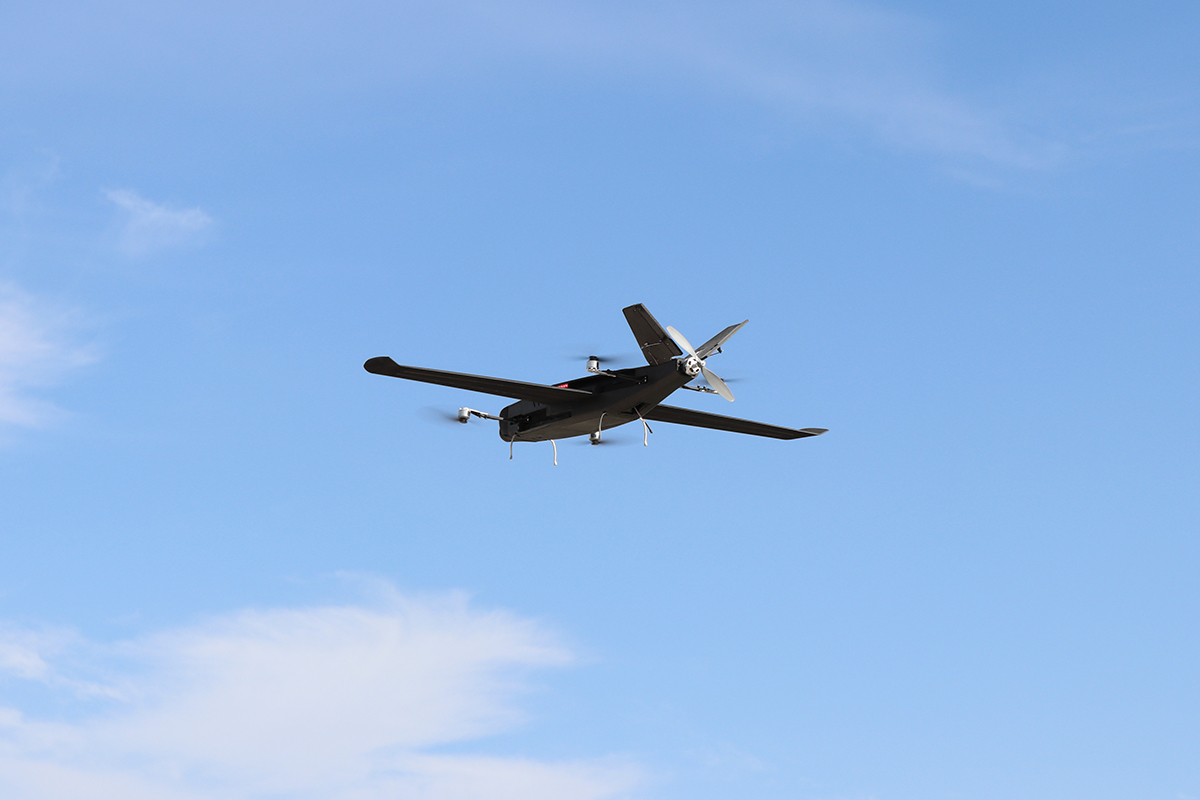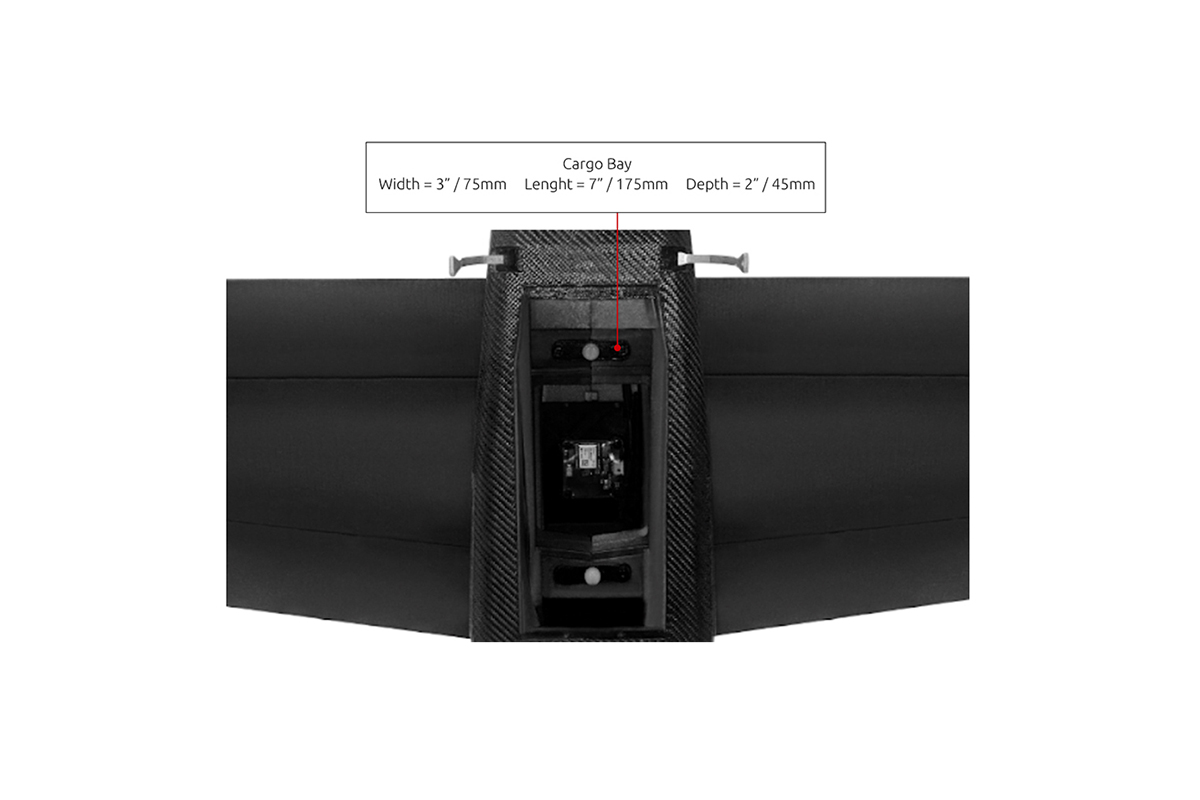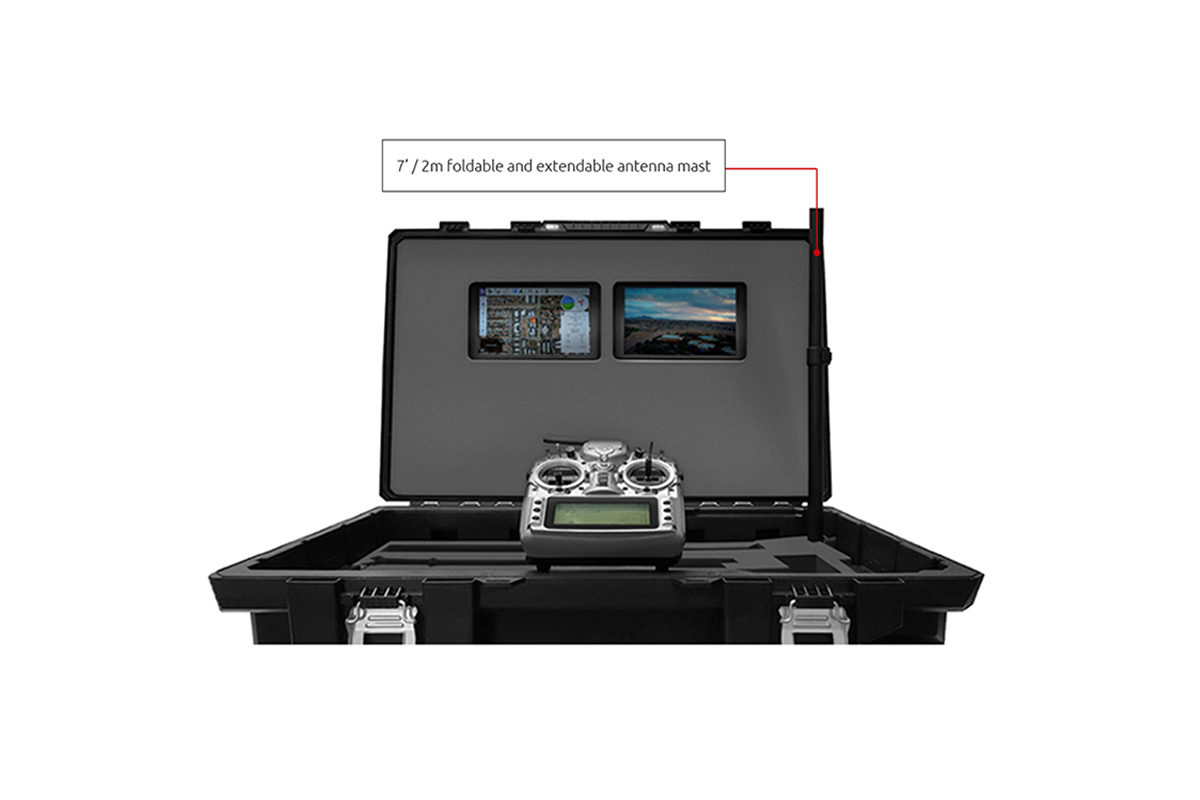Performance Data
Winged cruise speed (Blade config): ~50mph/80kph
Winged top speed (Blade config): ~80mph/130kph
Non-winged cruise speed (Hornet config): ~25mph/40kph
Non-winged top speed (Hornet config): ~60mph/100kph
Winged cruise range (Blade Config): ~55 miles/90 km
Hornet range (No Wings): ~9 miles/15km
Endurance Blade Config (winged): ~55 minutes (extendable with second battery - US version only)
Endurance Hornet Config (no wings): ~20 min (extendable with second battery - US version only)
Max ascent speed: ~3m/s Blade, ~6m/s Hornet
Payload: ~600g/18oz (Blade), ~500g/16oz (Hornet)
Weather limit Blade: ~15mph/24kph crosswind VTOL, otherwise ~22mph/35kph; light rain
Weather limit Hornet: Wind resistance ~18mph/30kph; light rain
Service ceiling: ~6,000m/16,500ft (Winged Cruise)
Temperature range: ~-15ºC/5ºF to 50 ºC/122ºF; check battery condition, especially in very cold weather
Design Parameters
VTOL motors: 4x ~150W, ~1,200rpm per input Volt, brushless electric
Thruster motor: 1x ~500W, ~1,300rpm per input Volt, brushless electric
Servos: digital, metal-geared
Battery: 16V (4 cells), 6,000 mAh; can use smaller battery for shorter, more sporty flight; or carry additional battery for > 1 hour flight time (US version only)
VTOL propellers: ~9 inch
Thruster propeller: ~9 inch
Materials: carbon fiber, 7075-T6 aluminum, light weight foam, ABS
Wingspan: ~43inches/1,080mm
Length of body w/o tail and nose cone: ~25inches/640mm
Weight of body with tail (Hornet configuration): 985g/35oz
Maximum take-off weight: 2,300g/81oz
Control and Interfacing
Ground station radio frequency: 915 MHz or 868 MHz (FCC and CE compliant)
Ground station radio technology: Black Sheep Crossfire
Video down-link: 5.8 GHz (FCC and CE compliant)
Ground station radio and video antennas: directional
Flight controller CPU:32 bit, 168 Mhz, 256 KB RAM, Pixhawk based, with backup CPU
Flight controller compatibility: USB interface on flight controller and ground station
Ground control software: QGroundControl customized
Ground control software functionality: program SkyProwler for autonomous missions independent of the radio ground station via ground station tablet, enables Mapping, Surveys, GPS waypoints including transitions from cruise flight to hover and back, Automatic photography, Autonomous flight, etc.
Eye Aerial Action Cam and integrated gimbal stabilization (igs)
Video: 4K UHD at 30 fps, 1080p HD at 60 fps and 720p at 120fps
Photo: 16 mega pixels
CMOS Imaging Chip: 16 Megapixels
SD card: SanDisk Extreme Plus or equivalent
Camera trigger: via radio ground station or via on board buttons
Camera orientation (pitch, roll, yaw): Pitch control: - 95 degrees to + 60 degrees, Roll: +/- 45 degrees; Yaw: +/- 30 degrees
Brushless Motors for igs: integrated gimbal stabilization (igs) via 3 x 12N14P micromotors
IGS controller: 3-axis micro gimbal controller
Lens mount: snap mount for quick lens change
